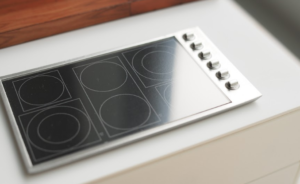Japan-headquartered id.arts focuses on helping others design major projects. Their latest innovations involve the use of 3D printing to simulate the building of a kitchen, and you don’t have to be a contractor or architect to find this innovative work completely fascinating in miniature. And while we have followed news from many different companies using 3D printing for creating architectural prototypes, id.arts has created a detailed, multi-faceted project exemplifying how so many professionals can use 3D printing in their work.
The high-definition kitchen simulation model is one of id.arts’ original solutions focused on using 3D technology, meant to appeal to industrial designers and developers. Obviously, their work can translate to many different industries, and the kitchen simulator offers more than a hint of what 3D printing can do for prototyping and planning. Different designs can be created and then changed easily. Models like that of the kitchen simulation demonstrate the self-sustainability available for designers as they create, along with speed and affordability.
“This 3D print kitchen model uses parts generated from multiple 3D printing methods to easily exchange and simulate all parts including faucet fixtures, tabletops, sinks, doors, counters, and cookware,” states id.arts.
The id.arts team has been experimenting with 3D printing in prototypes such as kitchen design long enough to know that one of the greatest challenges can be warping of materials due to shrinkage.
“At id.arts, we have used our unique know-how to drastically decrease warping and distortion,” states the Japanese design team.
The goal is to give the project designer as much inspiration to work with as possible.
“This 1/10 scale kitchen simulation model also comes as a set with high-definition 3D print furniture models and flooring materials (2D print) on the same scale, so the user can coordinate the entire space and set up the flow of traffic to fit the kitchen design,” id.arts says.
The design team used SLS 3D printing with nylon to create the tabletops and counters. They state that even in fabricating objects longer than 30cm, they saw no warping. Faucet fixtures were created using SLA with a Formlabs Form 2 3D printer; afterward, they were plated.
 The Japanese designers have been involved in 3D technology for years, viewing it as an ‘effective asset,’ and especially for professionals who rely on prototypes like home and building material manufacturers. The 3D printed kitchen model is one result—and a quality example—of the research their company has performed over time.
The Japanese designers have been involved in 3D technology for years, viewing it as an ‘effective asset,’ and especially for professionals who rely on prototypes like home and building material manufacturers. The 3D printed kitchen model is one result—and a quality example—of the research their company has performed over time.
While their team has met previous challenge in using 3D data created for 3DCG simulation, their ultimate goal has been to use 3D data for the following:
- Photorealistic architectural simulation
- VR/AR simulators (Unreal Engine, Unity)
- 3D printed models
“By using one set of data for the varied purposes of 3DCG, VR, and 3D printing, we can leverage that data as an effective asset,” states id.arts.
Now, the design team is working with numerous kitchen manufacturers and architects to create other innovative solutions in 3D. Along with the examples shown here, id.arts also makes other 3D printed items for their clients to include small interior objects, decorative pieces, and joinery.
What do you think of these miniature 3D printed kitchen pieces? Let us know in the id.arts Kitchen Models forum thread at 3DPB.com.
[Images supplied to 3DPrint.com by id.arts]Subscribe to Our Email Newsletter
Stay up-to-date on all the latest news from the 3D printing industry and receive information and offers from third party vendors.
Print Services
Upload your 3D Models and get them printed quickly and efficiently.
You May Also Like
Heating Up: 3D Systems’ Scott Green Discusses 3D Printing’s Potential in the Data Center Industry
The relentless rise of NVIDIA, the steadily increasing pledges of major private and public investments in national infrastructure projects around the world, and the general cultural obsession with AI have...
Formlabs Teams Up with DMG MORI in Japan
In late June, Nick Graham, Chief Revenue Officer at Formlabs, announced on LinkedIn that the company had partnered with DMG MORI, one of the world’s leading machine tool companies, to...
EOS in India: AM’s Rising Star
EOS is doubling down on India. With a growing base of aerospace startups, new government policies, and a massive engineering workforce, India is quickly becoming one of the most important...
3D Printing News Briefs, June 25, 2025: R&D Materials, 3D Printed Veneers, & More
In today’s 3D Printing News Briefs, 3DXTECH has launched a program that gives customers early access to experimental materials, and the first Lithoz CeraFab Multi 2M30 in the Czech Republic...








































